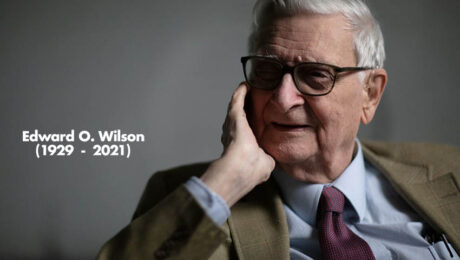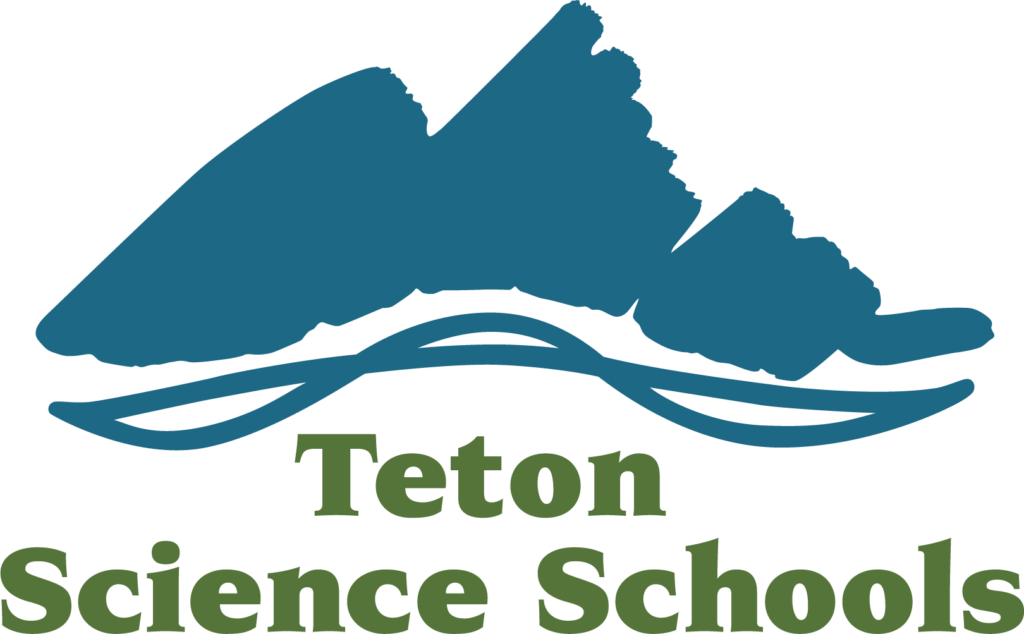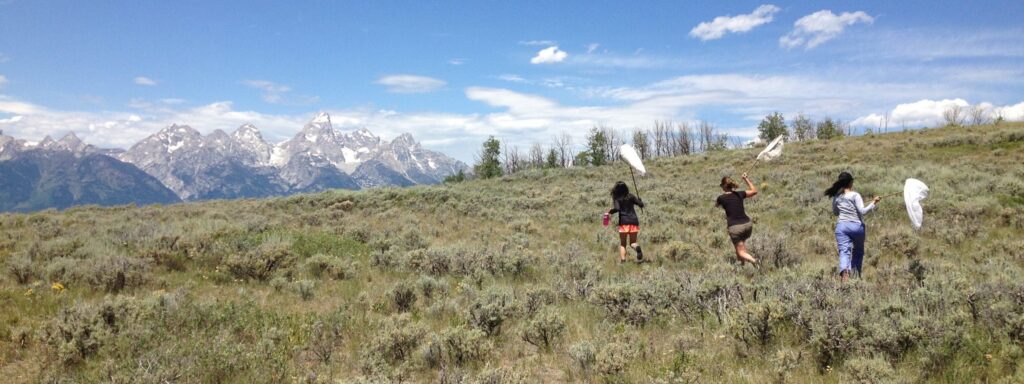Teton Science Schools would like to acknowledge the passing of preeminent scientist, naturalist, author and teacher, Edward O. Wilson, Ph.D. He is known as “the father of biodiversity”. E.O. Wilson died on December 26, 2021 in Burlington, Massachusetts, at the age of 92.
One of the most distinguished American scientists, E.O. Wilson devoted his life to studying the natural world which led to unprecedented environmental advocacy. His groundbreaking and controversial “half-earth” plan suggests that to stop the mass extinction of the bulk of earth’s species, 50% of the world should be set aside and conserved for biodiversity.
Wilson also launched the Encyclopedia of Life initiative with the goal of creating a global database to include information on the 1.9 million species. His hope was to inspire others to care for the natural world as he did. E.O. Wilson attended a Bioblitz at TSS over a decade and a half ago, inspiring students and staff alike to become Citizen Scientists and help to catalog the biodiversity of the natural world.

TSS Professional Learning Coach and Graduate Program Alumni, Amy Lorenz shares her experiences participating in the Encyclopedia of Life project as well as some cherished memories of meeting Dr. Wilson during her time at the Harvard Museum of Comparative Zoology.
Background on Encyclopedia of Life and my Connection
In 2007, E.O. Wilson received a TED prize for his life’s work in evolutionary biology and biodiversity conservation. During his speech he made a wish: “I wish we will work together to help create the key tools that we need to inspire preservation of Earth’s biodiversity. And let us call it the “Encyclopedia of Life.”
The next year, the Encyclopedia of Life (EOL) was founded and became the world’s largest free digital biodiversity resource with curated information on nearly 2 million species, with an education team to translate an enormous resource that is used by the general public, teachers, and students.
I first found out about EOL as a TSS grad student – we used EOL to research species during our natural history course. In my second year of grad school, I became very interested in the value of place-based community science for student learning. A few years later I joined the EOL education team based at the Harvard Museum of Comparative Zoology to coordinate a place-based education and community science grant in a rural Florida community, not far from E.O. Wilson’s childhood home.
Reflection on Working with Encyclopedia of Life and E.O. Wilson’s Legacy
I only met E.O. Wilson a few times in the three years of working with EOL. Although he wasn’t often on campus and our interactions were infrequent, we felt his influence in all of our areas of our work.
Two things I have always admired about E.O. Wilson are:
1) his sense of wonder and passion for his subjects and his field. Even after seventy years of research, he spoke about ants with such reverence and joy.
2) his mission to promote the importance of insects and other unseen, often undervalued groups of organisms. In his book “Letters to a Young Scientist” he encourages youth to look past the dominant elements of ecosystems to the microbes and invertebrates that are the foundations of our ecosystems.
I was delighted that both of these were also expectations for my role. Although based in Massachusetts, I spent about 2-3 months a year in the Florida panhandle working side by side with students, teachers, and community members to facilitate schoolyard bioblitzes and co-build place-based biodiversity activities with teachers.
We had 3 main goals in conducting schoolyard bioblitzes:
- Fostering students’ sense of discovery and connection to place
- Creating a long-term community science project for biodiversity monitoring
- Build teacher comfort and capacity in experiential, place-based learning
I didn’t know much about the ecosystems of the Gulf Coast before my first visit. I soon learned that this area is a biodiversity hotspot – especially for trees, freshwater fish, amphibians and reptiles. I learned that Eglin Air Force Base holds the largest in-tact longleaf pine habitat and houses many endangered, rare, and endemic species.
The schoolyards we explored varied greatly, from a monoculture grass field to woods, ponds, and meadows. No matter the space, life was buzzing! There were so many insects, arachnids, lizards, even tree frogs after it rained. We’d hear students gleefully shrieking as they chased butterflies across the fields, watch them carefully scoop up a spider, and gather around a tree frog they found in a gutter – full of wonder and joy.

Local naturalists and biologists helped us identify our species, pointing out keystone species, indicator species, and cultural significance/stories of various wildlife. This made the student experience more valuable, knowing local biologists were interested in their findings. We all felt the rush of daily discoveries – things we had never seen before – and knowing there was so much more to be discovered in the place that also sparked Dr. Wilson’s curiosity.

The second time I met E.O. Wilson, our team had lunch and spent the afternoon with him in his office – a wonderland of ants and other small things. We listened to some of his stories, shared projects we were working on, and discussed how the next generation of ecologists could save the world’s biosphere. We were able to share photos and stories of students and their plethora of discoveries with Dr. Wilson, the budding naturalists in the southern Pine Hills just might go on to carry out his legacy.
What can we do to carry out E.O. Wilson’s legacy?
Be curious. Ask questions. When you pass by a log or rock, take a quick peek underneath to see what’s living under there (and then replace it!) Look for opportunities to engage in community science – there are lots of ways to engage in ecological, geological, public health, and cultural projects wherever you are.
Thank you to Amy Lorenz for graciously sharing her experiences and thoughts. TSS joins many in the scientific community in mourning the loss of E.O. Wilson. His fervor to preserve the natural world and all it’s biodiversity, from the miniscule ant to the hulking elephant, all integral to the precarious balance of our planet, is unparalleled.
Further study:


